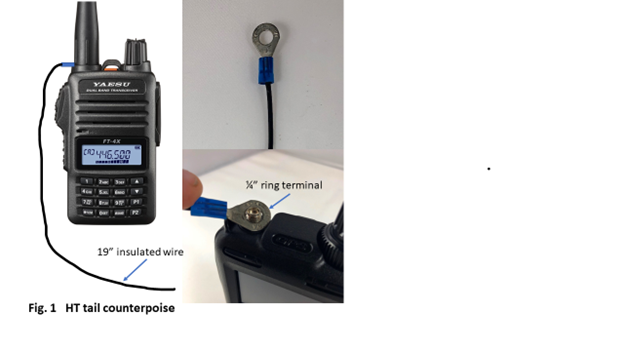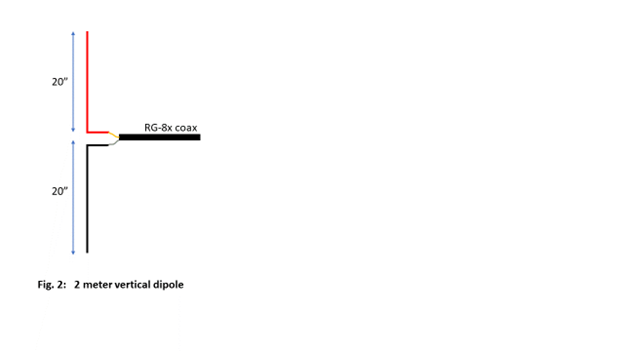It’s time for the weekly club net and you’re ready to check in on the local repeater. With HT in hand, you confidently press the PTT button. “This is KE8ABC, Homer, in Springfield.”
Net control responds with “I heard a KE something. Try again.” After several more tries, no luck. Disappointed, you set your radio on the table and listen to the rest of the check-ins. So, what’s going on?
Perhaps your HT is suffering from low-T (low transmit). Here are ways to improve its performance.
Supercharging the Duck
Almost any antenna works better than the six-inch rubber duck that comes with most handhelds. Short, flexible antennas are durable and safer when working in close quarters around people. They’re a good choice for dual-band transceivers but are usually optimized for one band and only acceptable on the other.
The National Bureau of Standards tests of Public Safety high band and amateur 2-meter antennas show that a rubber duck has negative gain of up to -5dB compared to a 19-inch quarter wave antenna held at face level. Due to the design of the factory installed HT antenna, you are effectively missing half of the antenna. A rubber duck is only one leg of a vertical dipole—a short, loaded, lossy one.
So where’s the other half? Your body acts as the ground when using a handheld radio. By holding the radio, you are capacitively coupled to the radio and make the other leg of the antenna. Of course, you aren’t a very good ground system.
A simple way to improve the efficiency of your handheld’s antenna is attaching a counterpoise to the radio to be a better ground. There is a product called a rat tail/tiger tail designed for this purpose, but you can easily homebrew your own by attaching a piece of wire about a quarter wavelength long to the radio’s case. The dangling wire isn’t pretty, but it will noticeably boost your signal. Figure 1 shows how this is constructed. Use stranded insulated wire about 19 inches on 2m and 6.5 inches for 70cm.

Size Matters
To increase your range, consider an aftermarket antenna. There are many choices, including larger rubber ducks, telescoping antennas, and mobile antennas. All are larger, likely closer to ¼ wavelength, and some even include provisions for a counterpoise or ground.
Telescoping antennas like the MFJ 1712 Dual Band series add length and can collapse to about seven inches. They’re available with models that include either SMA male, female, or BNC connectors.
MFJ 1717 Dual Band antennas have a 15.75-inch flexible radiator in SMA male, female, or BNC connectors.
For mobile use, the Diamond MR77 20-inch antenna with magnetic mount gets your antenna out of the car and onto the roof. You can also choose just about any mobile VHF/UHF antenna and add the magnet mount/cable connections.
A ¼ wave mag mount antenna is typically used on a vehicle but can also be used portable or even at home with a suitable improvised ground. A metal filing cabinet, refrigerator, window air conditioner, balcony railing, pizza pan, or other large metal object can work as well.
If you really want to be heard from home, use an outdoor antenna—or hide one in the attic. A DIY vertical dipole can be built for less than $10 and installed just about anywhere—see Figure 2. Encase inside ½-inch PVC pipe to weatherproof. Not a maker? The MFJ 1401 ground plane kit and Comet GP-1 base vertical are inexpensive options.

No matter which you choose, keep the coax run as short as possible to minimize power losses. Use a good quality coax like DXE RG-8X.
Location, Location, Location
Getting a better signal from your HT often depends on how and where you hold it. Handheld radios are built for portability, so everything about them is a compromise. The first step in getting a better signal is to get the radio off your belt and hold it at face level.
When you use a VHF/UHF handheld radio, the signal will fluctuate as you move around, depending on the position of the antenna, your body, and things around you. Signals may be stronger near a window, when facing the repeater, or just in a different spot. Moving a few feet can make a big difference, especially indoors. Repositioning can help change a signal from barely intelligible to solid copy.
Height above ground improves signal, since 2m/70cm bands are line of sight. Go upstairs or move to higher ground to help your signal.
Charge!
HTs typically can transmit at a maximum of 5 watts—some do more. But this is based on a fully charged battery. How many of us actually remember to regularly charge our HT batteries? Make it part of your weekly routine so you’re not caught with a weak battery.
Do you know how to check/change the output power settings? For example, the Yaesu FT-65R has three settings: 5W, 2.5W, 0.5W. Increase the power as needed to compensate for a weak signal.
In Your Face
Sometimes I’ve seen hams absentmindedly hold their radio horizontally with the microphone covered up, or worse yet, talking into the back of their radio. Not only does a covered mic muffle the audio, but with the antenna in a horizontal position, your signal becomes horizontally polarized. HTs and repeaters use vertical polarization. The difference in polarizations can cause several dB of signal loss.
Keep the microphone close to your mouth, about three inches or so, and speak in a normal voice. Screaming into the mic doesn’t improve your signal. Instead, it will cause overmodulation and distortion.
Boosting Low-T
Notice that we didn’t mention adding an amplifier or buying a 50W radio. Your HT is sufficient for local communications through a local repeater—all it may need is a little boost. Pick the solution that best fits your operating habits and needs.

